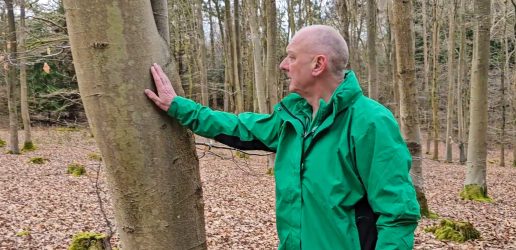Research carried out by the University of Southampton and Forest Research is helping to tackle one of the biggest sustainability challenges – looking after and nurturing the natural resources in the world around us.
The study outlines a new approach for using environmental ‘big data’ to understand where different approaches to managing our ‘natural capital’ (e.g. forests, lakes, soils) are most effective, so the environment continues to provide us with the food, water, recreation and timber on which we all depend. The work has been carried out with co-authors from Forest Research and the Centre for Ecology & Hydrology (CEH). Both organizations collect the big data used in the study, via the UK’s Countryside Survey (CEH) and National Forest Inventory (Forest Research). The study is part of SCALEFORES, a €1.5m project funded by the European Research Council (ERC) and findings are published in the journal Nature Sustainability.
To demonstrate their method, the scientists applied it to the management of both forests and ponds. They show how the cleanliness of Britain’s ponds are affected by how intensely the surrounding land is farmed – but only in the north of Britain, where soils are sandy (allowing pollution to flow through them quickly) and there is less air pollution. This demonstrates where measures to reduce the amount of chemicals used by farmers will be particularly effective for protecting our freshwater environment.
The scientists also show that forests in the east of the country are usually more at risk from the invasive plant species rhododendron if there are other forests nearby, but that this is not usually the case in the west of Britain. This is because in the east, soils are usually less suitable for the bushes – hence they can only spread if woodlands are close together. Rhododendron can inhibit the regeneration of native woods and have an adverse effect on their biodiversity by blocking sunlight to forest floors. It can be managed at an early stage by untrained volunteers removing seedlings by hand, but once established it is very costly and difficult to remove, so knowing which forests to prioritise for monitoring its arrival is important.
Lead author Dr Rebecca Spake of the University of Southampton said: “Resources to manage our landscapes are finite and understanding the things which drive our natural capital is vital as we try to adapt in the face of global environmental change. Our method gets to the root of those drivers and helps identify why and where management actions can be applied to best effect.”
The principal investigator on the project, Professor Felix Eigenbrod, also of the University of Southampton, said: “We all benefit from the environment around us in different ways – whether it be from water resources, fields, woodland or wild landscape. Walkers, for example, draw value from the landscape in a different way from farmers, and managing the countryside in a way which benefits both is a big challenge. This research helps to show how the UK government can achieve the ambitious goals in its 25-year environment plan, and make smart interventions to improve our environment.”
Professor James Bullock of CEH added: “This study shows the importance and value of the national datasets produced by CEH and Forest Research. They improve our understanding of the complexity of our natural environment and help determine how to manage it for future generations.”
Dr. Chloe Bellamy of Forest Research said: “The 15,000 woodland squares surveyed for the National Forest Inventory (NFI) provide a detailed picture of the British wooded landscape. But, to truly harness the power of ‘big data’, we need new approaches to sort through the complexity. The methods we’ve developed are providing a deeper understanding of our natural environment, informing national-scale strategies to protect and enhance the benefits woodlands and other ecosystems provide to society.”

Forest Research, in partnership with Edinburgh Napier University, have taken a first step in systematically assessing the timber potential of underutilised species in the UK.
Tree professionals working in arboriculture are being asked to take part in a new tree health survey as part of a DEFRA-funded project looking at pathways and practices concerning the tree disease, canker stain of plane.

Nature, the world’s leading multidisciplinary science journal, has published findings from a new global study investigating which tree species fix the most carbon.

Forest Research, in partnership with Edinburgh Napier University, have taken a first step in systematically assessing the timber potential of underutilised species in the UK.
Tree professionals working in arboriculture are being asked to take part in a new tree health survey as part of a DEFRA-funded project looking at pathways and practices concerning the tree disease, canker stain of plane.

Nature, the world’s leading multidisciplinary science journal, has published findings from a new global study investigating which tree species fix the most carbon.